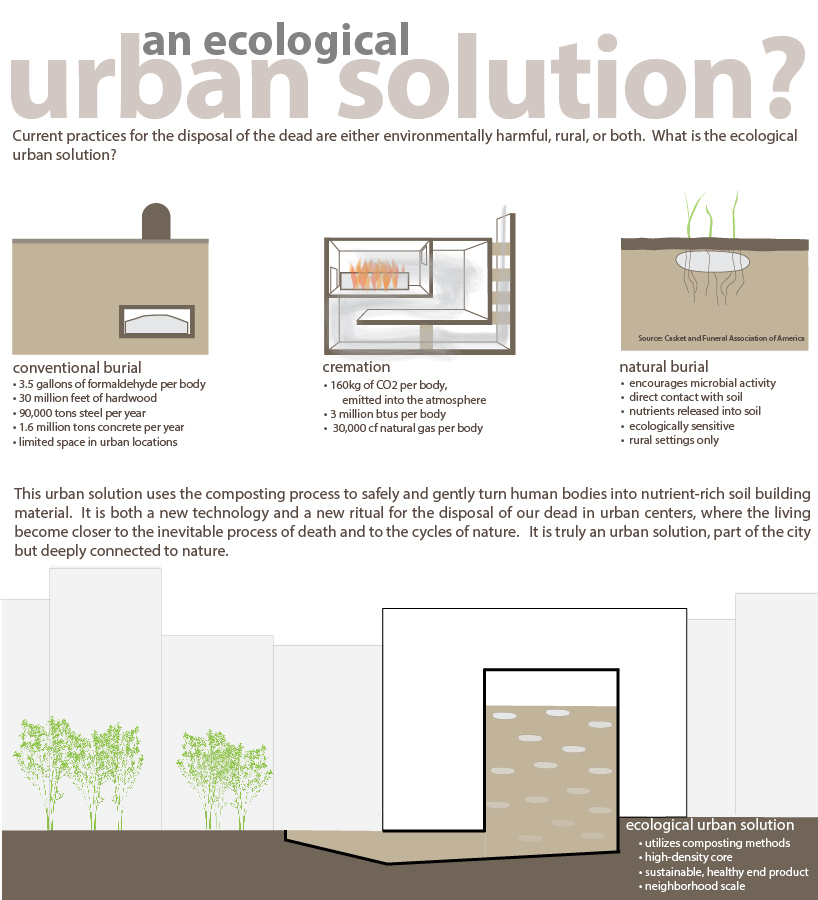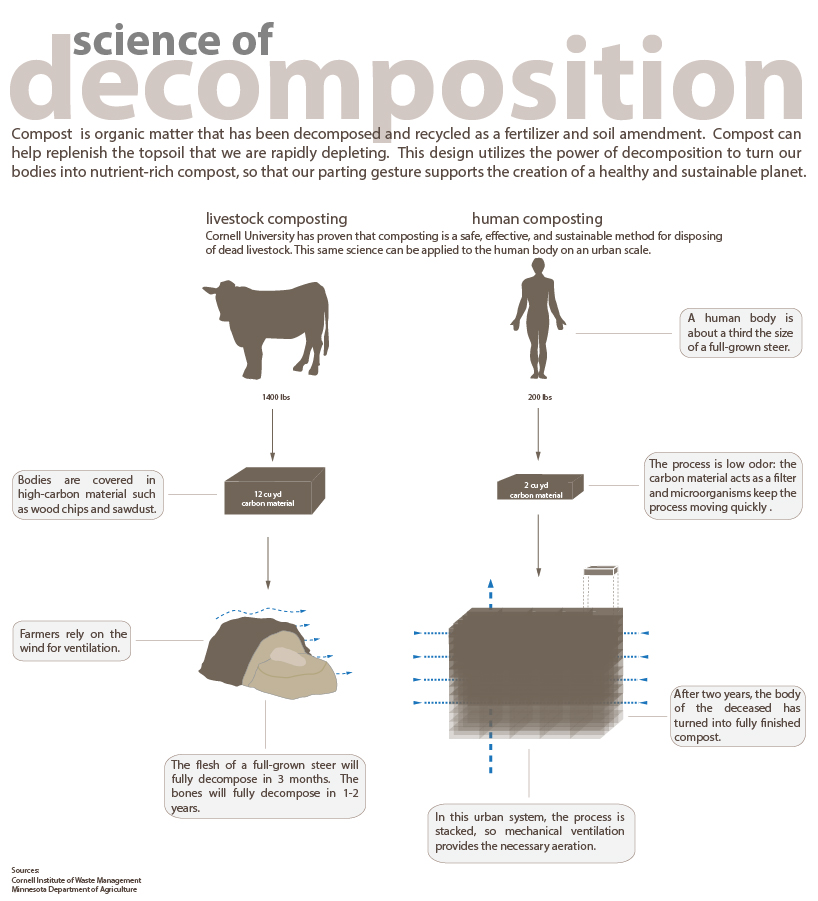
a design for the urban dead by Katrina Spade from usa
designer's own words:
In the end, we leave behind our physical bodies and they decompose, a fact Western society tries to forget, or ignore, or stop altogether. But the truth is that without decomposition – the process by which organic material is broken down to support new growth – we would not exist at all. The bodies we leave behind aren’t just shells of our former selves; they are full of potential – nitrogen, water, calcium and phosphorus – the building blocks of nutrient-rich soil.
This project challenges almost everything about traditional disposal practices in Western society by proposing a place and a ritual that embraces decomposition and harnesses the deceased human body for life-giving activities. It responds to a growing dissatisfaction with existing practices and an ongoing search for more meaningful transitions. Utilizing the science of livestock composting, this project applies the same process that is at work all around us to speed up the decomposition of our dead. Truly sustainable, the end product is a nutrient-rich compost - a beautiful final parting gift from the deceased and a gentle alternative to conventional practices.
This innovative prototype is specifically designed for the urban setting, where ecological options for the disposal of dead bodies are scarce. The increased interest in natural burials, which are a logical, beautiful solution for the disposal of the dead in rural settings, points to the growing need for an equally appropriate urban solution.
The basis of this project is a multi-story concrete core that contains the process of decomposition. Friends and family “lay in” the body of the deceased at the top of the core, and cover it with carbon-rich material such as wood chips and sawdust. This moment is an essential part of the ritual – it helps to frame the grieving process and lends a physicality to the experience.
Because of the process of decomposition inside, the core itself is warm to the touch, and visitors can feel the heat on its surface.
As the body decomposes, it settles lower in the core, and new material and bodies are layered on top. After eighteen months, the body – both bones and flesh – is completely composted, leaving behind a nutrient rich humus, much like you would find three inches down on the forest floor. Once it is finished, the compost is moved via a screw conveyor from the bottom of the core to a welcoming outdoor space. Here the compost – both its past and its potential – is experienced as sacred.
This exterior compost space is designed as a place where mourners and visitors may stop and reflect. The compost may also be taken away for use by members of the community, utilized for urban gardens.
This designs offers a new model for the disposal of the urban dead, where bodies are composted and turned back into soil-building material. This project is both a space and a ritual, and its purpose is to connect us to the earth. In doing so, it helps to facilitate the grieving process, reminding us that we are a part of something much bigger than ourselves.
This urban solution uses the composting process to safely and gently turn human bodies into nutrient-rich soil building material. This design utilizes the power of decomposition to turn our bodies into nutrient-rich compost, so that our parting gesture supports the creation of a healthy and sustainable planet.
This design utilizes the power of decomposition to turn our bodies into nutrient-rich compost, so that our parting gesture supports the creation of a healthy and sustainable planet. Envisioned as a place to honor the dead at a neighborhood scale, the project also supports a more sustainable city by engaging directly with the community.
Envisioned as a place to honor the dead at a neighborhood scale, the project also supports a more sustainable city by engaging directly with the community. At the top of the core, friends and family cover the deceased with a high-carbon mixture of wood chips and sawdust.
At the top of the core, friends and family cover the deceased with a high-carbon mixture of wood chips and sawdust.  This new paradigm for the disposal of our deceased celebrates compost, decomposition, and soil, recognizing them as crucial components in our quest for a more sustainable world.
This new paradigm for the disposal of our deceased celebrates compost, decomposition, and soil, recognizing them as crucial components in our quest for a more sustainable world.